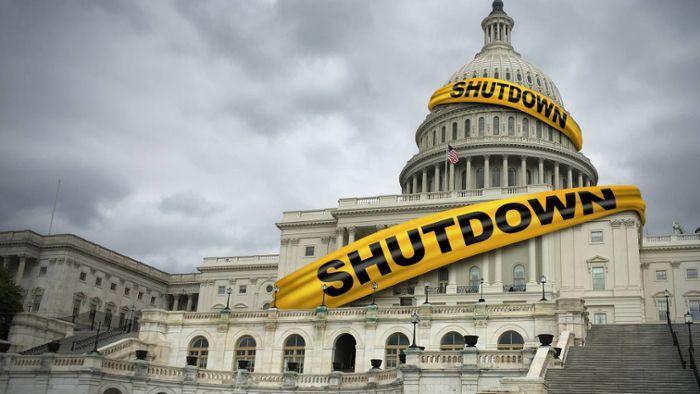As the United States edges closer to a potential government shutdown, the Senate has rejected key spending bills essential to keeping federal agencies funded. The failure to reach a consensus raises the specter of widespread layoffs across various government sectors, intensifying concerns over economic disruption and public services. This latest impasse marks a critical juncture in Washington, with lawmakers facing mounting pressure to resolve budgetary disputes before the deadline.
Government Shutdown Looms as Senate Blocks Crucial Spending Bills
The Senate’s unexpected blockade of key federal spending bills has intensified fears of an imminent government shutdown. Lawmakers remain deadlocked over budget allocations, raising concerns over the continued operation of essential services. With critical funding stalled, numerous federal agencies are bracing for disruptions that could affect millions of Americans nationwide. Public sector employees face the harsh reality of potential furloughs, as the impasse threatens to slash payrolls within weeks.
Impact highlights include:
- Suspension of non-essential government programs
- Delays in federal contract payments
- Potential layoffs affecting thousands of government workers
- Disruption of public health and safety operations
| Agency | Employees Potentially Affected | Status |
|---|---|---|
| Department of Homeland Security | 40,000 | Critical personnel remain on duty |
| Environmental Protection Agency | 12,000 | Furloughs expected |
| National Park Service | 20,000 | Park closures possible |
| Internal Revenue Service | 80,000 | Operations limited |
Impact on Federal Workforce Intensifies with Potential Widespread Layoffs
The ongoing stalemate in Congress has cast a long shadow over the federal workforce, with growing fears of mass layoffs now becoming a stark reality. Agencies affected by the shutdown are grappling with insufficient funds, forcing many employees into unpaid furloughs or temporary unemployment, forcing them to confront severe financial and personal uncertainties. This situation is compounded by the fact that critical federal services risk significant disruption, impacting public services and national operations alike.
Some of the key factors fueling this crisis include:
- Suspension of payroll processing in non-essential departments
- Delayed responses in critical agencies like TSA and FDA
- Heightened uncertainty undermining workforce morale and productivity
| Agency | Estimated Layoffs | Service Impact |
|---|---|---|
| Department of Homeland Security | 15,000+ | Security screening delays |
| Environmental Protection Agency | 4,500 | Paused regulatory enforcement |
| National Park Service | 7,200 | Park closures |
As the shutdown drags on without resolution, federal employees face an increasingly uncertain future, with many advocating for urgent legislative action to prevent the catastrophic consequences of widespread job losses.
Economic Consequences and Public Services at Risk Amid Funding Stalemate
With the Senate’s steadfast rejection of the spending bills, critical government functions face an uncertain future. Federal agencies are on the brink of operational paralysis, and the immediate fallout means essential services—from transportation safety to public health programs—could see reductions or complete halts. The ripple effect extends into the economy, where uninterrupted funding is vital for maintaining market stability and consumer confidence.
Communities nationwide are bracing for impacts that include:
- Delayed medical care and reduced pandemic response capacity
- Suspended grants for education and local development projects
- Paused infrastructure maintenance, risking safety and economic productivity
- Growing uncertainty for federal employees facing furloughs and layoffs
| Agency | Impact Level | Employees at Risk |
|---|---|---|
| Transportation Security Administration | High | 40,000 |
| Centers for Disease Control and Prevention | Moderate | 10,000 |
| Environmental Protection Agency | High | 15,500 |
Calls for Bipartisan Negotiation Grow to Prevent Prolonged Government Closure
Amid escalating concerns over the potential economic fallout, political leaders from both sides of the aisle are intensifying efforts to forge a path forward. Lawmakers emphasize the urgency of bridging ideological divides to avoid debilitating impacts on federal employees, government contractors, and public services. Advocacy groups and business leaders alike have voiced strong support for bipartisan dialogue, warning that a prolonged shutdown could ripple through countless sectors, undermining consumer confidence and market stability.
Key points highlighted by analysts include:
- Immediate negotiation: Calls for reopening discussions on budget allocations to swiftly resume government operations.
- Worker protections: Measures to shield federal employees from layoffs and pay disruptions during political standoffs.
- Economic safeguards: Strategies to mitigate risks to national and global financial markets if closure extends.
| Stakeholder | Priority | Proposed Action |
|---|---|---|
| Democrats | Protect social programs | Increase funding; Oppose cuts |
| Republicans | Fiscal responsibility | Limit spending; Reform allocations |
| Business Leaders | Economic stability | Expedite resolution; Support bipartisan talks |
| Federal Employees | Job security | Prevent layoffs; Ensure pay continuity |
Closing Remarks
As the Senate continues to reject key spending bills, the prospect of a government shutdown grows increasingly imminent, casting a shadow over thousands of federal workers facing potential layoffs. Lawmakers remain at a stalemate, with urgent negotiations required to avert widespread disruptions in government services. The unfolding situation underscores the critical need for bipartisan cooperation to restore fiscal stability and protect public sector employees. USA Today will continue to provide updates as this developing story evolves.




